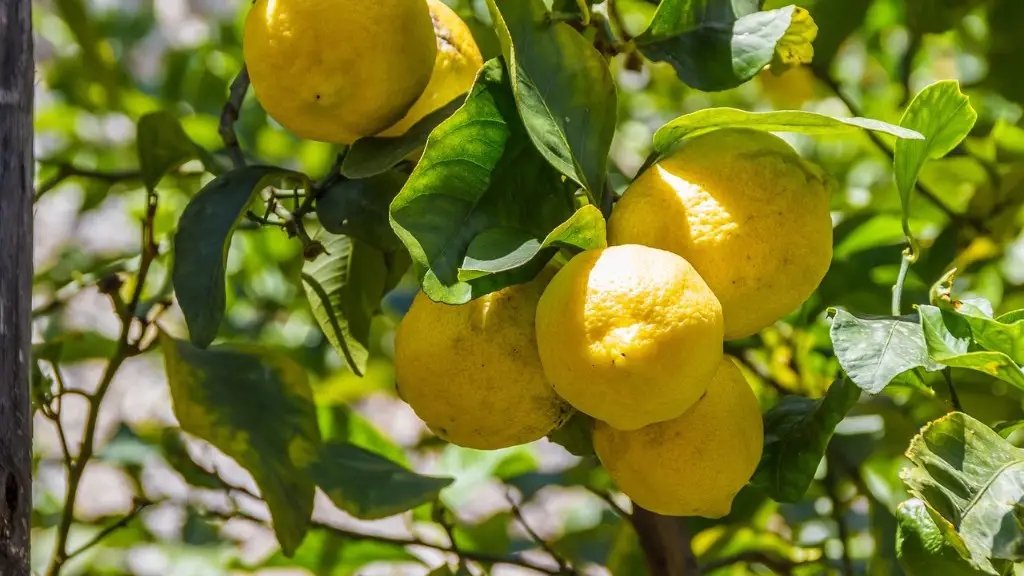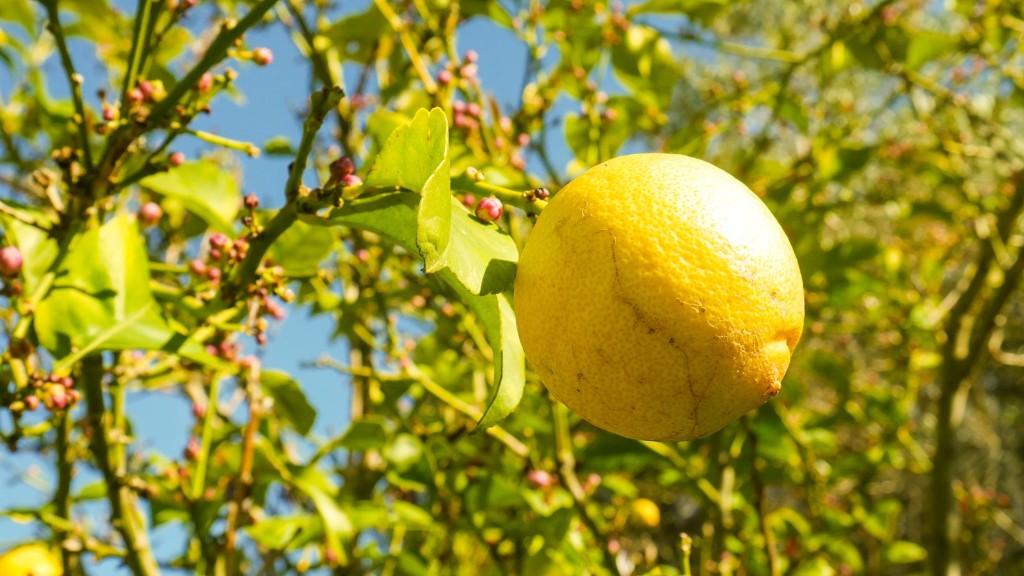Trimming a lemon tree is an important part of its care, but deciding when to do it can be tricky. The best time to trim a lemon tree can depend on the climatic conditions of the area and the stage of maturity of the tree. To get the most out of your fruit crop, it’s best to trim trees when they’re young and growing vigorously, as well as if they become overgrown, during the dormant season and to shape and reduce the size of the crown.
When your lemon tree is in its active growing stage, late spring is the best time to trim it. Trimming at this time encourages growth by removing the tender shoots present in immature stems. Prune off these young stems to encourage lateral growth, helping to create a rounded crown. If you have mature lemon trees, you can trim them in late spring or summer when they’re in their active season of growth. The best time to do this is when the tree has finished fruiting, so that the new branches it produces are strong and have time to develop before winter.
Climatic conditions also need to be taken into account when deciding when to trim a lemon tree. If you live in a temperate climate, the best time to prune is during the colder months from late autumn to early winter. This is when the lemon tree is dormant, and trimming at this time helps to reduce diseases, encourages new growth and enables the tree to better withstand the summer heat. Conversely, if you live in a more tropical climate, you should trim your tree toward the end of winter and in early spring, so as not to discourage new growth and avoid frost damage.
When trimming your lemon tree, aim to reduce the size of the crown but don’t prune back past the main framework of the tree. You can remove crossed and rubbing branches and any old, weak or diseased branches, as well as any overgrown parts of the tree. Be sure to cut the branches back to the intersection of the main stem and make sure to not leave a stub, as this can cause damage to the stem.
Overall, when trimming your lemon tree, evaluate the size of the tree, check its health and condition, and consider the climatic conditions of your area before deciding when the best time to trim your tree is. By pruning trees correctly and at the right time of year, you can help ensure your trees stay healthy and produce a healthy crop for years to come.
How to Trim a Lemon Tree
Trimming a lemon tree is not a difficult task but it does require some basic knowledge and specific tools. It is important to first understand why you need to trim a lemon tree. Trimming a lemon tree is essential to maintain a healthy tree, promote healthy lemon production and to shape the crown.
To properly trim a lemon tree, you need to have the right tools. Suitable tools include sharp pruning shears, a sharp saw, and a pole pruner or anvil Pruners. It is also important to use disinfecting agents to minimize the spread of diseases on the cutting tools.
Inspecting the lemon tree is the first step in trimming. Check the size and growth of your lemon tree, as well as its condition and individual branches. Look for any dead, diseased, overgrown, weak or crossed branches and remove these. Also, look out for any affected fruit, such as fruit with soft spots, and remove these as well.
When you are ready to start pruning, begin by removing any branches that are crossed, rubbing or interfering with other branches. Make pruning cuts close to the connection of the branch or trunk and make sure you do not leave any large stubs, as this can prevent new growth. Remove dead and diseased branches by cutting them away cleanly. Aim to reduce the size of the crown, so that there is an even distribution of branches, and to open up the canopy to allow more light and air to penetrate the foliage.
To shape the crown of a lemon tree, prune branches growing horizontally to encourage vertical growth. Also, remove any shoots that may be coming out of gaps on the existing branches. With mature lemon trees, you may need to selectively remove some of the branches growing from the tree’s interior, to encourage new growth from the outside and create a better- balanced tree.
Benefits of Trimming a Lemon Tree
Trimming a lemon tree properly and at the right time of year can offer many benefits, such as increasing the amount of fruit your lemon tree produces and keeping it healthy and strong. Pruning a lemon tree can also reduce unwanted growth, keep it a manageable size, and promote healthy new growth.
Trimming any dead, diseased and weak branches can enhance the overall look of the tree and work towards improving the overall health and vitality of the tree. Regular trimming also prevents branches and leaves from overgrowing, which can obstruct light to other parts of the tree, making it difficult for Photosynthesis to occur.
Another benefit of trimming a lemon tree is that it can help you achieve a better fruit harvest, as it enables more light and air to reach the fruit, helping it to ripen more evenly. The more light that reaches the fruit, the more sweet and appealing it will be. Additionally, trimming a lemon tree allows more gusts of wind to pass through, preventing any moisture and humidity from settling among the foliage and thus minimizing the spread of any diseases.
Pruning also encourages new growth and increases the life expectancy of the tree. Healthy, new growth encourages more productive lemon harvests in the future. Finally, pruning your lemon tree also makes it more aesthetically pleasing and improves the visual appeal of your landscape.
Tips for Trimming a Lemon Tree
Trimming a lemon tree properly can be a tricky task, but is essential for its health and vigor and the quality of the lemons that it produces. Here are some important tips to bear in mind when trimming your lemon tree:
Be sure your tools are sharp and that you know how to use them properly and safely. Prune during the dormant season in temperate climates, or at the end of winter/beginning of spring in tropical climates. When pruning, cut back to the intersection of the main stem and make sure you do not leave a stub. When shaping the crown, prune branches horizontally to encourage vertical growth. If it is a mature tree, selectively remove some of the branches growing on the inside to stimulate new growth on the outside.
Also remember that trimming a lemon tree incurs a cost of some kind – whether it is the labor involved, the materials used, or both. Don’t skimp on quality; it is essential to use sharp tools and make clean cuts, to maximize the health benefits of pruning. Generally, it is best to hire a professional arborist to safely and effectively trim your lemon tree.
It is also important to be careful not to over-prune your tree. Over-pruning can cause your lemon tree to go into shock and be unable to produce ample growth and fruit for many years to come. Remember to only trim what is necessary, so as not to damage your tree.
Pruning Damage in Lemon Trees
Incorrect pruning and pruning damage is one of the main causes of a lemon tree not producing fruit, or of weakening the tree. Pruning damage occurs when branches are cut back too far or incorrectly. For example, a branch may be cut back to the wrong length or at an incorrect angle, which may result in it dying or becoming diseased.
Damage can also occur if a stub is left after pruning, as this prevents the branch from healing and seals up the wound, stopping new growth from occurring. It can also cause the branch to become diseased or rot, as the wound is unable to heal properly. Additionally, pruning damage can occur if branches are pruned at the wrong time of year, as this can damage the tree’s health or kill off new growth.
It is important to make sure any pruning is done correctly, so that the potential for pruning damage is minimized. Prune at the right time of year, use sharp tools and make clean cuts back to the intersection of the branch or trunk. Always make sure not to leave any stubs.
Additionally, it is also important to monitor your lemon tree regularly for any signs of pruning damage, such as disease and rot. If any damage has occurred, remove the affected branch and treat the wound with disinfecting agents.
Conclusion for Trimming Lemon Trees
Trimming a lemon tree is not only an essential part of its care, but it can also be an enjoyable and rewarding task. By trimming at the right time of year and using clean, sharp tools, you can help ensure your lemon tree is healthy and strong for years to come, and achieve a good fruit harvest. Keep in mind the importance of pruning correctly, in order to avoid any potential damage to the tree, and always monitor the health of your tree regularly to prevent and identify any issues.



